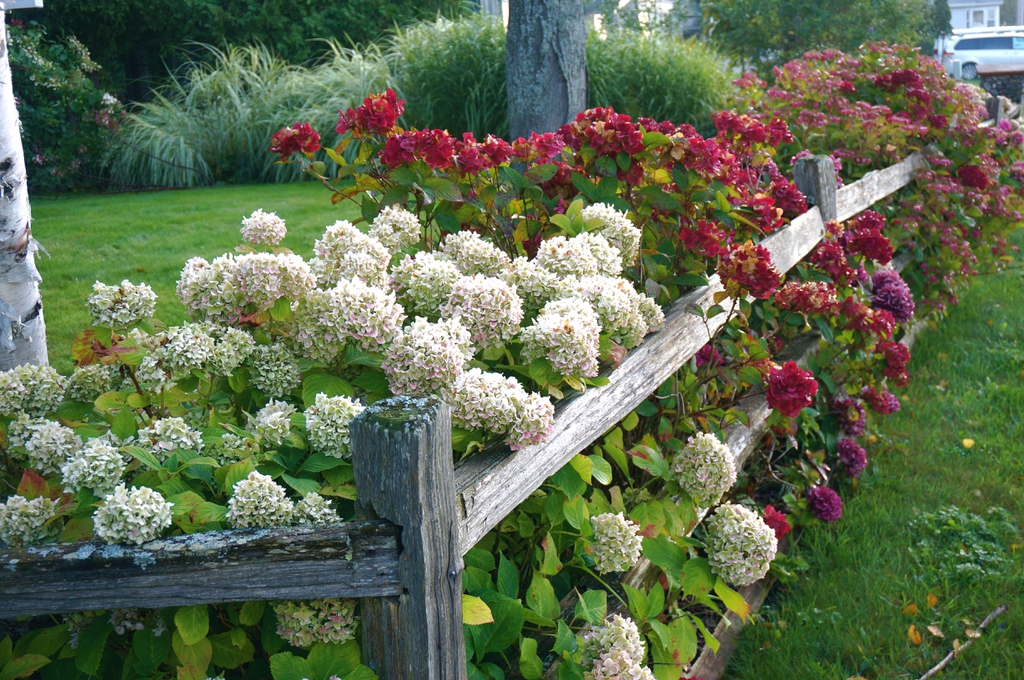Pruning Tips for Hydrangeas
go.ncsu.edu/readext?880173
en Español / em Português
El inglés es el idioma de control de esta página. En la medida en que haya algún conflicto entre la traducción al inglés y la traducción, el inglés prevalece.
Al hacer clic en el enlace de traducción se activa un servicio de traducción gratuito para convertir la página al español. Al igual que con cualquier traducción por Internet, la conversión no es sensible al contexto y puede que no traduzca el texto en su significado original. NC State Extension no garantiza la exactitud del texto traducido. Por favor, tenga en cuenta que algunas aplicaciones y/o servicios pueden no funcionar como se espera cuando se traducen.
Português
Inglês é o idioma de controle desta página. Na medida que haja algum conflito entre o texto original em Inglês e a tradução, o Inglês prevalece.
Ao clicar no link de tradução, um serviço gratuito de tradução será ativado para converter a página para o Português. Como em qualquer tradução pela internet, a conversão não é sensivel ao contexto e pode não ocorrer a tradução para o significado orginal. O serviço de Extensão da Carolina do Norte (NC State Extension) não garante a exatidão do texto traduzido. Por favor, observe que algumas funções ou serviços podem não funcionar como esperado após a tradução.
English
English is the controlling language of this page. To the extent there is any conflict between the English text and the translation, English controls.
Clicking on the translation link activates a free translation service to convert the page to Spanish. As with any Internet translation, the conversion is not context-sensitive and may not translate the text to its original meaning. NC State Extension does not guarantee the accuracy of the translated text. Please note that some applications and/or services may not function as expected when translated.
Collapse ▲Hydrangeas are a beloved landscape plant and especially so with the newer hybrids. There are more than 100 different varieties, including the climbing hydrangea, large oak-leafed varieties, red-stemmed choices and hydrangeas with pure white blooms. Because there are oodles of cultivars it’s helpful to categorize hydrangeas in one of five groupings: Bigleaf hydrangea (H. macrophylla); Climbing hydrangea (H. anomala); Oakleaf hydrangea (H. quercifolia); Panicled or Peegee hydrangea (H. paniculata); and Smooth hydrangea H. arborescens).
The prevalent hydrangea is the big-leaf hydrangea, Hydrangea macrophylla. This “older” cultivar is typically pink or blue, depending on soil pH. Acidic soils produce blue flowers and alkaline soils produce pink petals. Aluminum uptake from the soil to the roots is responsible for color change.
The general rule for pruning hydrangeas is to trim spring blooming shrubs after they flower and summer blooming shrubs in late winter. Remember azaleas? Hybrid azaleas bloom in the spring and then without delay set flowering buds for next year. So pruning “post bloom” is the best option. Summer flowering plants bloom on wood that grows in the summer, so by pruning in the winter, you avoid removing any flowering buds.
Hydrangea species vary in the type of wood they bloom on, making pruning decisions a bit more difficult! With this in mind, it’s important to know the category type your hydrangea falls into and go from there!
Hydrangea macrophylla – French or Bigleaf Hydrangeas
There are two main reasons why bigleaf hydrangeas fail to bloom. The cultivars were developed for areas with a warmer climate than geared for Jackson and Swain counties, or the hydrangeas were pruned at the wrong time of year. Bigleaf hydrangeas set flower buds on old wood. Old wood develops in late summer and fall. When pruning is done any time after flower buds form, the next summer’s blooms are removed. Thus the safest time to prune bigleaf hydrangeas is immediately after flowering.
The color of Bigleaf Hydrangea flowers are directly affected by pH. Acid soils will cause Bigleaf Hydrangeas to bloom blue and alkaline soils will cause the plant to bloom pink.
Hydrangea quericifolia
The flowers on Oakleaf hydrangeas are produced on old wood from last year’s growth. Typically flowers bloom in June, but persist through the summer and gradually change from white to pink, and eventually to a tan in the winter. If needed, prune after flowering to maintain a desired size and shape. Winter killed or other dead wood can be removed any time.
Hydrangea paniculata & Hydrangea arborescens
Both panicled and smooth hydrangea such as Annabelle bloom on new wood, or wood grown in spring and early summer. These can be pruned after fall frost and still flower the following summer. Some growers cut their ‘Annabelle’s’ to the ground each winter in order to have flower heads on three to four foot straight stems the next summer.
Climbing hydrangeas are vigorous growers that bloom on old wood. The only necessary pruning is to remove unwanted stray stems for growth control. This may need to be repeated several times in the season as the vine quickly produces new stems. To avoid reducing bloom, prune them after blooming.
Western North Carolina often experiences “early spring” only to have new growth hit by a cold snap! Pruning at the correct time may not ensure hydrangea blooms each year.
Original article written by Alan Durden.





